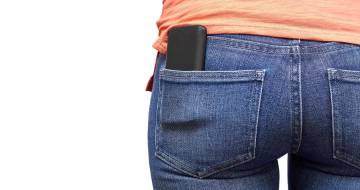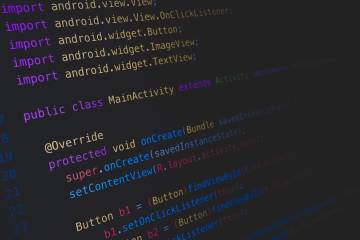People Counting & Customer Tracking: Counters vs Wifi vs Apps

People counting, wifi tracking, and mobile apps can all be used to measure footfall. But each technology has important limitations as well as benefits.
People counting and footfall analytics are increasingly used to optimise service delivery. That might be in retail, visitor attractions, venues, transport hubs or other crowded places.
A diverse group of footfall analytics technologies are deployed with very different capabilities. The first key distinction is between counting and tracking.
People Counting vs Customer Tracking
People counting solutions can count people as they pass through an entrance / exit, or the number of people in an area. But they don’t track individuals. You can count the flow of people into a shop, and out of a shop - giving daily and hourly footfall figures. But you can’t match a person’s entrance and exit, so you don’t know how long they spent in the shop.
Customer tracking solutions are different. They can associate entrance and exit events for an individual, providing information about the customer (for instance how long they spent), rather than just the premises (how busy it was). This allows in depth footfall analytics, rather than just counting.
People vs Devices
Another important distinction is whether people are being counted, or whether a device they’re carrying (usually a mobile phone) is being counted. In the first case we have a direct count of the number of people - which is usually what’s needed. In the second case we’re sampling the public - and a method is needed to reliably convert from device numbers to people numbers.
Mobile sensing vs Infrastructure sensing
Where it’s devices being counted or tracked, a final distinction is whether the data gathering is happening on the device (eg a mobile app), or in infrastructure (installed sensors, wifi access points etc).
People Counting solutions
Footfall sensors are often installed at entrances / exits, and can provide accurate direct people counts. But this is limited to the flow through the monitored entrance. Techniques include thermal, stereo and mono cameras, time of flight measurement, and Infra-red beams..
These techniques count footfall rather than track people. They can provide limited footfall information for the premises, but shed no light on customer behaviour.
CCTV Solutions
CCTV incorporating people counting software can also be used, and to an extent they can track individual paths. But cameras are expensive, and installation is a challenge. Each camera only covers a small zone, and systems can’t always stitch together the customer journey. What’s delivered is often little more than counting.
Customer Tracking Solutions
Customer Tracking techniques, on the other hand, can provide footfall information for the premises, and also information about customer behaviour. They enable you to assess traffic patterns, differentiate new from recurring visitors, trace paths through a location, view dwell time, and so on.
There are two clearly differentiated technologies, both tracking customer mobile phones.
Wifi Tracking
Sensor based approaches rely on infrastructure to determine the location of customer phones. Bluetooth is sometimes used, but very often it’s wifi based. There’s a key strength of using wifi tracking (or ‘sniffing’) - no particular software needs to be installed on a customer’s phone. If they have a phone with wifi enabled, they can be tracked.
Sometimes just a single sensor is placed at a location of interest. This results in proximity data - how many devices came within range.
With just one sensor, this is counting rather than tracking. But with more than one sensor, ‘visits’ to the different locations of interest can be associated with an individual, so limited customer behaviour can be tracked.
Where data is gathered across installed wifi infrastructure, then actual locations can be tracked. Accuracy is a function of the infrastructure - how many access points are installed, and whether they’re capable of the very latest (and expensive) angle of arrival positioning.
With both single sensors and infrastructure sensing, the frequency of data gathered is very variable. For phones that aren’t associated with access points, there may only be a ‘ping’ every five minutes - which severely limits the value of the data.
For devices that are associated with access points, location is possible whenever data is being sent over the connection. This again is hugely variable. We’ve seen some wifi AP manufacturers recommending that a mobile app is deployed, which sends small packets of data to a server to enable continual location data to be gathered.
All of this leads to big questions over the actual usefulness of the customer tracking data that wifi tracking can provide. In 2014 Monolith conducted a study on the veracity of Wi-Fi tracking solutions currently on the market. At one store, the study measured a capture rate of 6-12%, while the provider reported it as 49%.
Privacy concerns also have had a major impact on wifi tracking techniques.
Privacy issues with Wifi Tracking
First the phone manufacturers now change the unique wifi identifier of the phone periodically, specifically to make long term tracking of the device, which might enable identification of the individual, impossible. This limits the value of any counting or tracking data.
Secondly, the consensus seems to be that MAC addresses, even when hashed, fall under the GDPR. Which means very clear user opt-in consent is required - something that’s almost impossible to achieve in practice.
Mobile App Tracking
The final option for customer tracking is app based. If a sufficient proportion of customers are using a mobile app (often the case in sectors like retail), then app based tracking can be a very attractive option.
Apps can be triggered to start sending location data to the cloud once a customer arrives on premises. Multiple techniques can be used to determine location - wifi, beacons, and even GPS and cell towers. Using GPS means that the customer’s journey into and away from the premises can also be monitored.
Data is only gathered if users have explicitly opted in, so privacy concerns are easy to deal with.
Using the right technologies, it’s possible to persistently gather data in ‘background’ - when the user isn’t actively using the app, and the mobile phone is in their pocket. The typical location accuracy is as good or better than wifi sniffing techniques. And the frequency of data gathering can be much higher and more reliable.
With Wifi RTT around the corner - the accuracy is going to get much better. App based data gathering will be 1-2m accurate in next couple of years, using just typically installed wifi network infrastructure.
It’s also possible to relate device counts to people counts - so the extraordinarily detailed device tracking data can be converted into footfall counts.
Summary
Each of the main people counting and customer tracking technologies have important advantages, but also limitations. So in deciding what technology to deploy, it’s vital to fully understand the application, and what each technology can deliver. The questions that need to be addressed include:
- Is it just footfall counts that are required, or is customer behaviour (eg dwell time, paths) also important?
- Do customers at the location use, or might they benefit from a mobile app?
- Over what period can costly infrastructure be amortised? (For events on temporary sites, often installation of sensors is impossible.)
- Is it feasible to obtain positive, opt-in consent from every visitor arriving at the premises? If not App based data collection may be the only option capable of delivering complete customer behaviour data.


